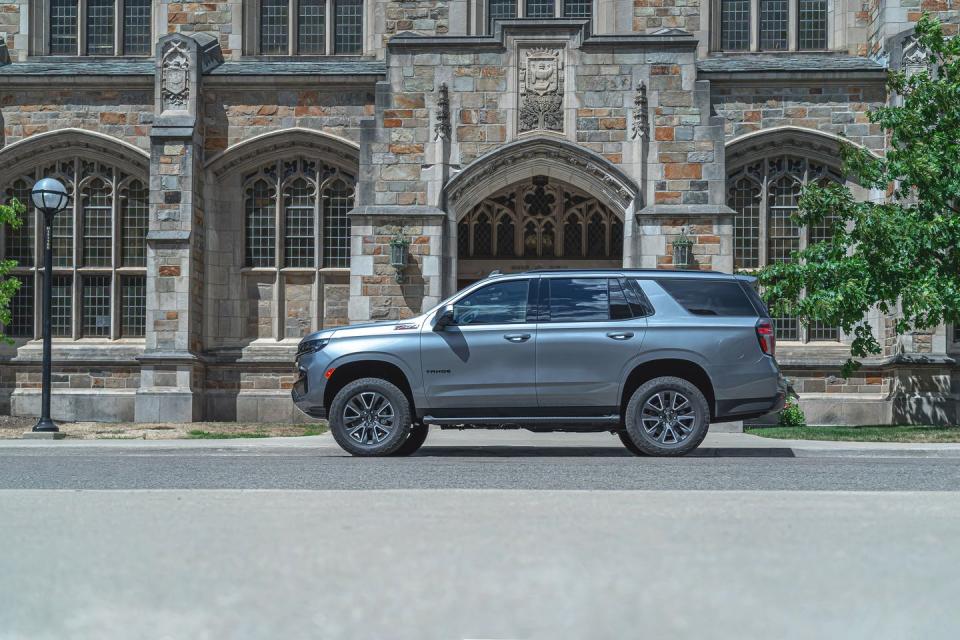Tested: 2021 Chevy Tahoe Z71 Goes Big Where It Counts

To wake the daydreamers, a high-school teacher of mine would slap a broken goalie stick on the desk of the offender and shout, "A picture is worth a thousand words!" In addition to learning to pay attention, we learned that visual aids are indeed very helpful—and the photos you're seeing of the 2021 Chevy Tahoe are indeed visual aids. But the headlights, giant grille, and design look better in person than they do in photos.
Besides, the big news is hidden away in the back and beneath the skin. General Motors engineers finally put an independent rear suspension into Chevy's large, three-row human haulers, the Tahoe and Suburban, as well as the GMC Yukon and Yukon XL. The independent rear suspension—a trailing-arm design—requires less space than a live axle, allowing for a lower floor. In previous Tahoes, third-row riders sat close to the floor, beach-chair style. Chevrolet has also extended the new Tahoe's wheelbase by 4.9 inches, and overall length is up by 6.7 inches.

These changes mean that, for the first time, the Tahoe's third row is a great place to sit. Legroom increases by more than 10 inches, and it will now be tolerated by full-grown adults for more than five minutes at a time. The second-row seats move and fold forward to provide good access to the third row. And to ensure that the third-row riders' knees aren't crunched when the second row is re-erected, the second row automatically returns to its more forward position. From there, second-row occupants can decide whether or not to kneecap the third-rowers with the seats. It's a smart design that makes the third row that much better.
Other convenient ideas include the five USB-C plugs as well as a rear window that opens independent of the hatch, something that's dying out in today's SUVs. Popping the window can make it easy to load smaller items, and leaving it open can help maximize the 25 cubic feet of available space behind the third row should you want to haul something long, like a ladder. GM tells us that there are 10 more cubic feet back there than before. To put that in perspective, we found that it's possible to carry six carry-on-size bags back there, two more than the old Tahoe.

Unlike its cousin, the Silverado pickup, Chevy went further with the Tahoe's interior. A large 10.2-inch touchscreen infotainment interface blends cohesively into the dash, and the column shifter is now a push-button-and-slider setup to the right of the gauge cluster. There's a motorized, retractable center-console lid for those who enjoy a bit of theater before storing their purse or men's European satchel. It is odd that it's motorized and perhaps stranger that the control switch for it is on the roof. The rest of the ergonomics are better. Chevy has blended physical controls (buttons, knobs, etc.) with screen inputs. There are some uncouth plastics, but you really have to be out to find them. Otherwise, the touch points have a richness commensurate with the Tahoe Z71's $76,175 as-tested price.

 Yahoo Autos
Yahoo Autos 